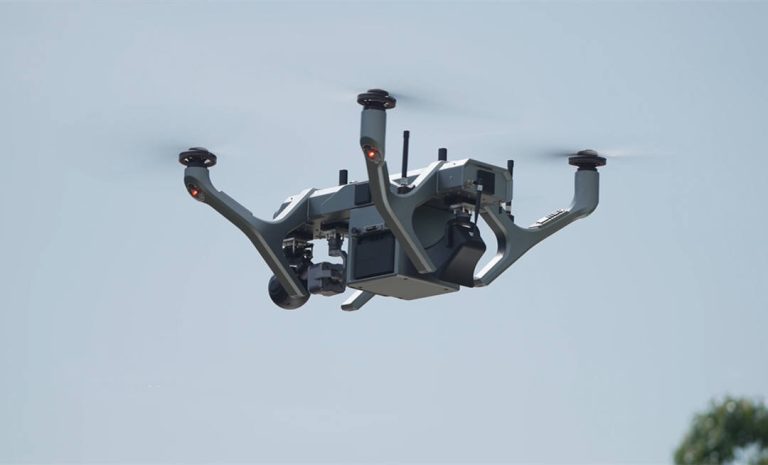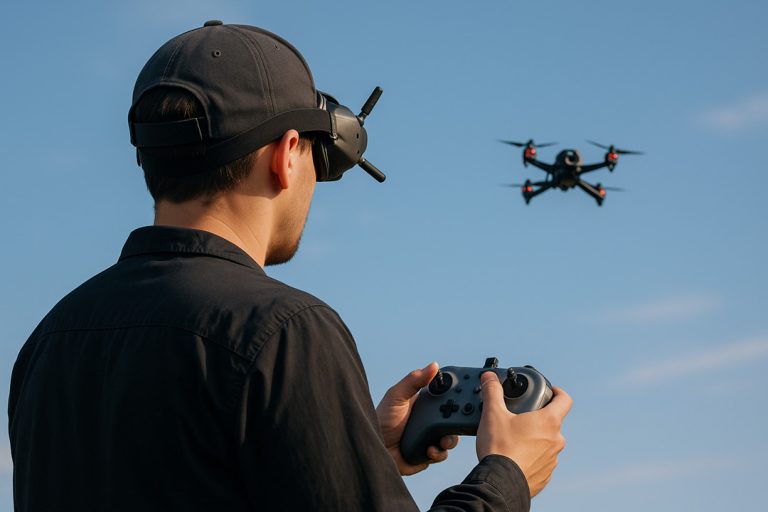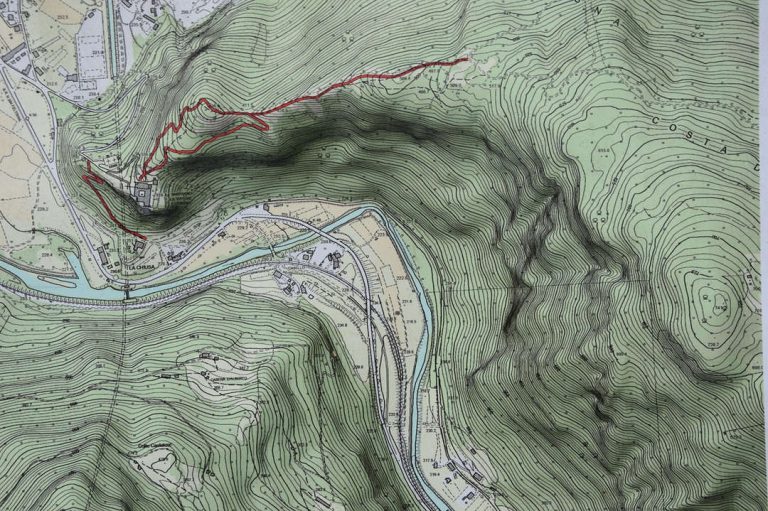Drone Wind Resistance Level Explained (2025): How Much Wind Can Drones Handle?
For commercial users working in surveying, mapping, inspections, or emergency response, wind isn’t just a nuisance—it’s a mission-critical factor. A drone’s ability to resist wind determines whether it can stay stable during a LiDAR scan, safely hover near infrastructure, or complete a flight path over remote terrain without compromise.
At JOUAV, we’ve flown missions in coastal wind tunnels, mountain valleys, and storm-prone regions—so we know firsthand that drone wind resistance isn't just a spec; it’s a lifeline.
In this article, we’ll break down drone wind resistance levels in plain terms and help you choose the right UAV for windy conditions. Whether you’re working offshore or at altitude, we’ll help you fly with confidence.
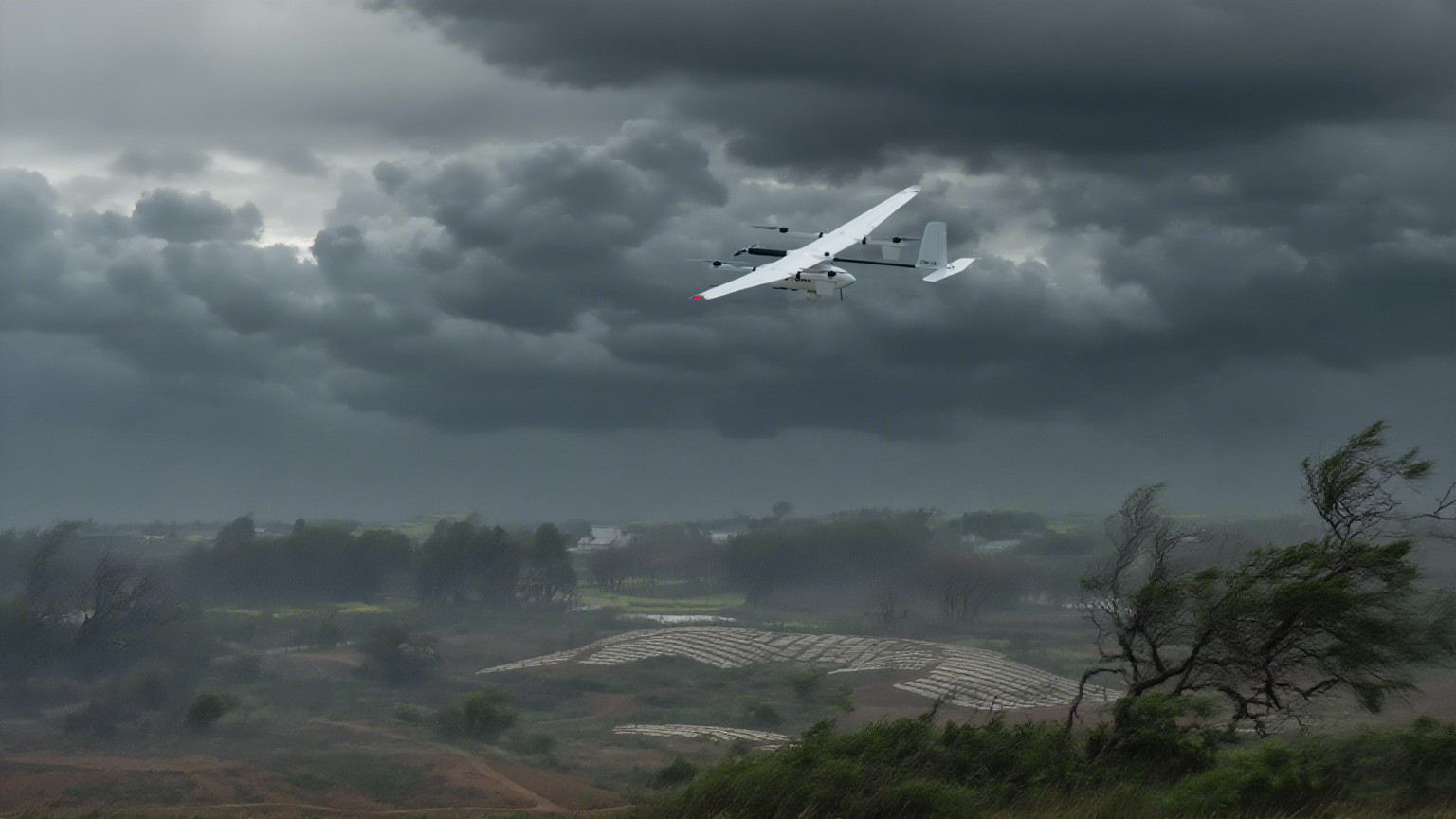
JOUAV's CW-15 VTOL drone flying steadily against strong winds.
What Are Drone Wind Resistance Levels?
Drone wind resistance levels tell you how well a drone can keep its balance and respond to controls when the wind starts pushing back. Think of it like a “grip” rating for the air — the higher the number, the steadier it’ll be when things get gusty. These levels usually run from 0 to 12, based on the Beaufort Wind Scale, with bigger numbers meaning tougher wind-handling skills.
If you fly industrial drones, this number matters more than you might think. A Level 6 rating, for example, means the drone can deal with winds of about 12–14 m/s (27–31 mph or 43–50 kph). That’s the kind of wind you’ll often meet offshore or up in the mountains. Push it past that limit, though, and you’re gambling with shaky footage, bad data, a failed mission — or worst case, watching your aircraft disappear into the clouds.
Manufacturers don’t always make it easy. Some will clearly say “Level 5” or “Level 8,” but others only list the maximum wind speed in meters per second in the specs. In that case, you’ll have to do a quick conversion into mph or kph so you can match it with the weather report and decide if it’s safe to fly. A little math now can save you a very expensive rescue mission later.
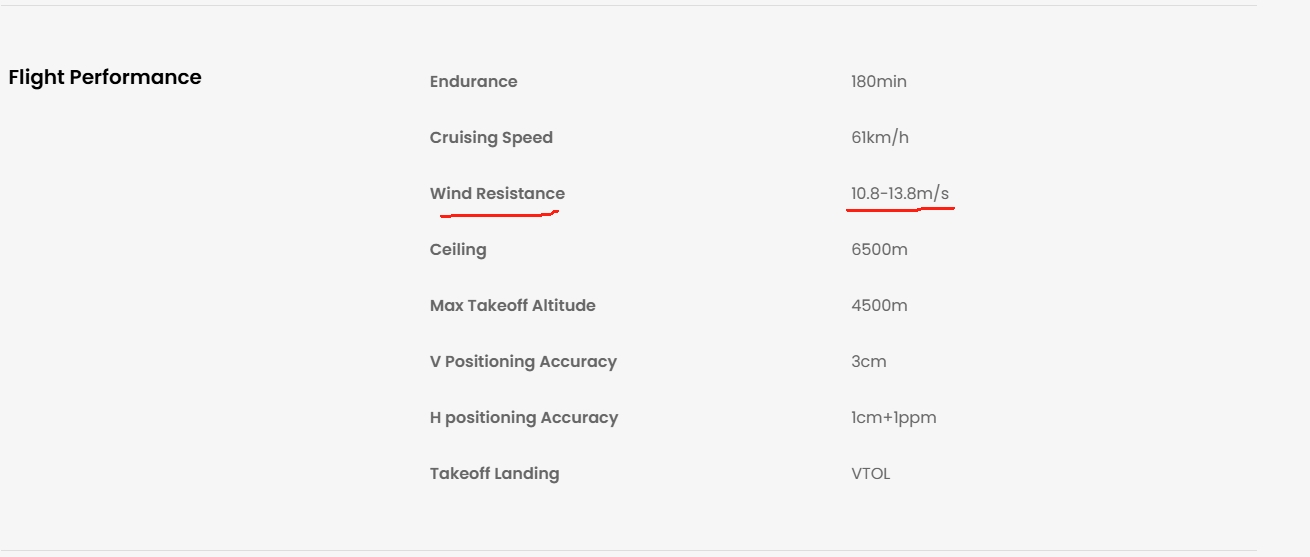
The Beaufort Scale
If you’ve ever seen specs like “Level 5 wind resistance” or “Level 8 wind resistance” for a drone, here’s the key to decoding them: the Beaufort Wind Scale. It’s a globally recognized system that breaks wind speeds into 13 levels (0 through 12), each with its own description of what’s happening outside — and what your drone might be up against.
| Beaufort Force Level | Description | Wind Speed Range (mph) | Wind Speed Range (m/s) | Drone Behavior |
| 0 | Calm | 0-1 mph | 0 – 0.45 m/s | Perfect conditions for any drone, even those with low wind resistance |
| 1 | Light Air | 1-3 mph | 0.45 – 1.34 m/s | Most drones should handle these conditions without problems |
| 2 | Light Breeze | 4-7 mph | 1.79 – 3.13 m/s | Some smaller, lightweight drones might struggle; others remain stable |
| 3 | Gentle Breeze | 8-12 mph | 3.58 – 5.36 m/s | The limit for many consumer drones; pilots should exercise caution |
| 4 | Moderate Breeze | 13-18 mph | 5.81 – 8.05 m/s | Challenging for lightweight drones; stable drones with GPS and good motors can manage; typically labeled “wind-resistant” |
| 5 | Fresh Breeze | 19-24 mph | 8.49 – 10.73 m/s | Strong wind impact; only high-quality drones with powerful motors should fly; professional drones with strong stabilization and GPS |
| 6 | Strong Breeze | 25-31 mph | 11.18 – 13.86 m/s | Very strong impact; flying is risky for all but the most durable professional drones; recommended only for heavy-duty, industrial, or military-grade drones |
| 7 | Near Gale | 32-38 mph | 14.31 – 16.99 m/s | Generally not recommended; high risk of losing control; some heavy-lift drones like JOUAV CW-80E can fly |
| 8 | Gale | 39-46 mph | 17.43 – 20.56 m/s | No drone flight should be attempted under these conditions; most will crash; very heavy drones may struggle |
| 9 | Strong Gale | 47-54 mph | 21.01 – 24.14 m/s | Flying is dangerous and could result in loss or destruction of drone; very few drones can fly |
| 10 | Storm | 55-63 mph | 24.59 – 28.16 m/s | No drone flight should be attempted under these conditions |
| 11 | Violent Storm | 64-72 mph | 28.61 – 32.19 m/s | No drone flight should be attempted under these conditions |
| 12 | Hurricane | 73-83 mph | 32.63 – 37.10 m/s | No drone flight should be attempted under these conditions |
Most consumer drones top out around Levels 3 to 5 — good for gentle to fresh breezes. Professional and industrial drones are a different story, often built to take on Level 6 (Strong Breeze) and sometimes even Level 7 (Near Gale) or Level 8 (Gale). But once you’re in Level 9 and beyond? Put the controller down. That’s nature’s “no-fly” zone.
Best Professional Drones for High Winds
Industrial drones are meticulously engineered for resilience, often featuring specifications that enable them to perform reliably in conditions that would render consumer models inoperable.
| Drone Model | Beaufort Level | Max Wind Speed (mph) | Max Wind Speed (m/s) | Typical Applications |
| JOUAV PH-20 | Level 8 | 39-46 mph | 17.43–20.56 m/s | aerial surveying, power line inspection, emergency response, and delivery |
| JOUAV CW-30E | Level 7 | 31.09-38.25 mph | 13.9-17.1 m/s | Large-area mapping, powerline inspection, emergency response, and environmental monitoring |
| Autel EVO II | Level 7 | 39 mph | 17 m/s | Aerial photography, videography, search-and-rescue, and quick deployment mapping tasks |
| JOUAV CW-15 | Level 6 | 24.16-30.87 mph | 10.8-13.8 m/s | Precision mapping, infrastructure inspection, and environmental surveys |
| DJI Matrice 350 RTK | Level 6 | 26.84 mph | 12 m/s | Precision mapping, inspection, and public safety missions |
| DJI Mavic 3 Enterprise | Level 6 | 26.84 mph | 12 m/s | Portable enterprise-grade drone for mapping, inspection, and search missions |
| DJI Inspire 3 | Level 6 | 26.84 mph | 12 m/s | Professional film and television production Autel Dragonfish Pro |
| Autel Dragonfish Pro | Level 6 | 33.56 mph | 15 m/s | Large-area mapping, coastal surveillance, and infrastructure monitoring |
| Freefly Alta X | Level 6 | 26.84 mph | 12 m/s | Aerial cinematography, industrial payload delivery, LiDAR mapping |
| Inspire Flight IF1200 | Level 6 | 26.84 mph | 12 m/s | LiDAR mapping and long-endurance inspection missions |
How to Determine Your Drone's Wind Resistance Level?
If you’ve been hunting through your drone’s manual for something like “Level 5” or “Level 7” wind resistance, you’ve probably noticed—most manufacturers don’t put it that way. Instead, they’ll quietly list it in the specs as Maximum Wind Speed Resistance, usually in meters per second (m/s).
That’s fine… if you think in m/s. But most of us don’t. To make sense of it—and match it up with the Beaufort Scale or your local weather forecast—you’ll want to convert it into something more familiar, like miles per hour (mph) or kilometers per hour (kph).
Quick Conversions
- m/s → mph: multiply by 2.23694
Example: 17.43 m/s × 2.23694 ≈ 39 mph
- m/s → kph: multiply by 3.6
Example: 17.43 m/s × 3.6 = 63 kph
A Real-World Case
Take the JOUAV PH-20, for example. It’s rated for a maximum wind resistance of 13.8 m/s. That’s about 39 mph or 63 kph.
On the Beaufort Scale, that’s Level 8 (Gale).
Translation? The PH-20 can keep flying in conditions where tree branches break, progress on foot becomes difficult, and most consumer drones would already be grounded.
Watch the JOUAV PH-20 undergo a simulated high-wind environment test, pushing its limits against Beaufort Level 8 winds:
11 Tips for Flying Drones Safely in Wind
Flying in the wind isn’t impossible — but it’s a whole different game. You’ll need a bit more prep, a steadier hand, and a sharp eye on your surroundings if you want to keep your drone safe and get usable footage.
1. Check the Wind Before You Even Unpack
Don’t just trust the forecast on your phone. Yes, weather apps are a good starting point for wind speed and direction — but they’re not the whole story. Step outside, feel it for yourself. If you want real numbers, use a handheld anemometer right where you’ll launch.
Some drone flight apps will also give you real-time gust data and flag whether it’s safe (or even legal) to fly in your area. And don’t forget your environment — cliffs, skyscrapers, or even a big warehouse can cause sneaky turbulence that’s not in any forecast.
2. Run a Windy-Day Pre-Flight Checklist
Think of this as your “extra insurance” before hitting the launch button:
- Battery check: Go out with fully charged packs and plan to come home with more than 50% left if possible — fighting wind eats through juice fast.
- Props and motors: Look for cracks, chips, warping, or anything loose. High winds put extra stress on your motors, so check for dirt or unusual wear.
- Compass calibration: Keeps your navigation accurate when gusts try to push you off course.
- Payload security: Any wobble or shift in your payload can throw off balance and make a windy flight harder to control.
3. Follow the Two-Thirds Rule
The “max wind resistance” in your drone’s manual? That’s the absolute limit — not your target.
A safer bet: fly only when the wind is two-thirds or less of that rating.
Example: If your drone’s maximum speed is 30 mph, keep it under 20 mph. That way, you’ve got a safety margin for sudden gusts, heavier battery drain, and steadier control.
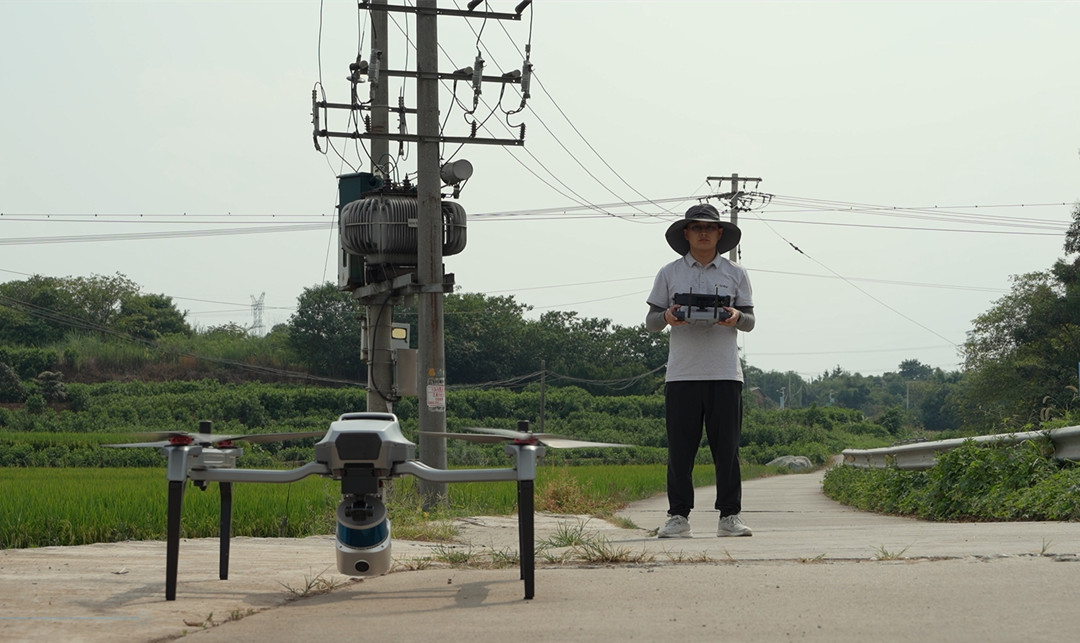
4. Pick Your Spot Wisely
Wind behaves differently around certain terrain. Open spaces are your friend. Avoid canyons, tall buildings, mountain ridges, or other structures that create swirling, unpredictable gusts.
5. Adapt While You’re in the Air
Pre-flight planning’s great, but wind can change the second you get airborne. Speeds can shift with altitude, and microbursts can appear out of nowhere.
Stay in a feedback loop:
- Watch live wind data from your app or drone sensors
- React quickly
- Be ready to change altitude, route, or land if things start looking sketchy
6. Take Off and Land into the Wind
When you lift off, wind can instantly push your drone sideways. Facing into the wind helps the props fight back and keeps you stable.
Landing’s trickier. Gusts and crosswinds can shove you off target. Come in low and shallow (about a 20° approach) and use a weighted landing pad for stability. If it feels unsafe — abort and try again.

7. Fly Lower and Smoother
The higher you go, the stronger (and messier) the wind tends to get. Lower altitudes give you more control.
Make gentle, deliberate stick movements. Avoid sudden turns or jerks. Keep the drone in sight at all times — GPS can get flaky in strong winds. And if you’re confident, “Sport” mode can punch through gusts, but it’ll drain the battery faster.
8. Plan Your Battery Use
Windy flights burn power faster — sometimes much faster. Watch your levels constantly.
A smart trick: start flying into the wind. You’ll work harder on the outbound leg, when the battery’s full, then ride the wind home with less strain.
9. Know Your Limits — and the Drone’s
Signs you’re at the danger point:
- You can’t hold a position without constant stick input
- The drone is drifting more than you can correct
- The battery is dropping at an alarming rate
That’s your cue to land.
10. Have an Emergency Landing Plan
Wind won’t always let you return to home — so be ready to improvise:
- Land somewhere safe nearby if you’re losing the fight
- Adjust altitude on RTH to clear obstacles
- Know in advance where your emergency landing spots are
- In extreme cases, cut the motors to reduce crash damage
- Always have GPS coordinates saved for recovery if needed
11. Inspect After Every Windy Flight
Wind puts extra wear on everything. Check your props and motors for cracks, warping, looseness, or debris before your next flight.
How is Wind Resistance Measured & Tested?
When drone makers talk about “wind resistance” in their spec sheets, those numbers aren’t just guesses. They usually come from a mix of lab tests, real-world flights, and aerodynamic simulations — all designed to find out how much wind a drone can realistically handle.
1. Wind Tunnel Testing — Controlled but Critical
One of the first stops in testing is the wind tunnel. Here, engineers can dial in exact wind speeds and directions to see how a drone behaves without the unpredictability of the outdoors. In this controlled environment, they’re watching for things like:
- How much drag the drone creates and whether it can keep lift stable
- How yaw, pitch, and roll respond when a crosswind hits
- Whether the motors can push back against the wind without burning too much power
- How sensors hold up when turbulence kicks in
These tests give manufacturers the baseline — the maximum sustained wind speed where the drone can still hover steadily, fly safely, and keep its position locked in. That’s where ratings like “Level 6” or “Level 7” come from.
2. Field Testing — Because Nature Plays by Its Own Rules
Wind tunnels are great, but the real world is far messier. Out in open test fields, drones are flown in actual wind to see how they handle the unpredictability of nature. Test crews measure:
- Stability when gusts come and go
- How fast the flight controller reacts to sudden shifts
- GPS/RTK accuracy when the drone’s being nudged around
- Whether video or LiDAR stays smooth in motion
Anemometers — those spinning wind sensors — are set up on-site and sometimes mounted on poles to measure wind speeds at different heights. This helps verify whether the drone can handle landings, vertical takeoffs, and payload hovering in conditions it will face on the job.
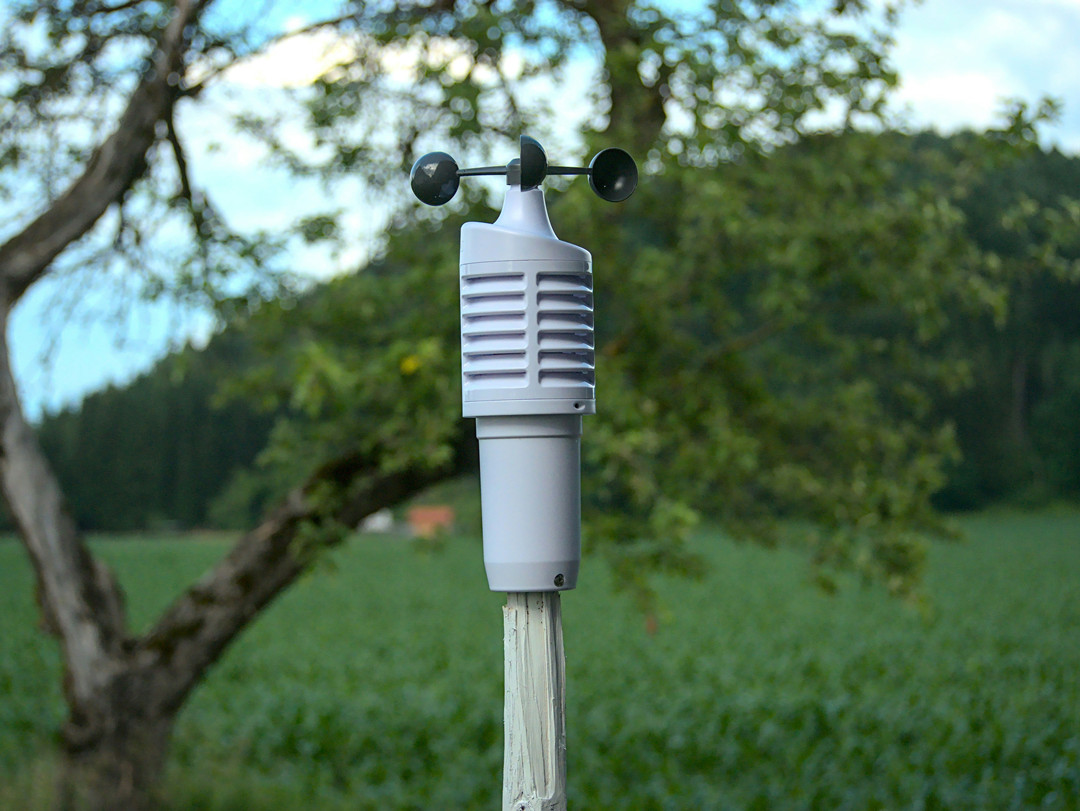
3. Gust Resilience — The Sneaky Challenge
Sustained winds are one thing; sudden gusts are another beast entirely. Engineers create these sharp bursts in both lab and outdoor tests to see how drones cope. They look at:
- Whether the flight controller’s gust-rejection code can stabilize things quickly
- If the motors have enough thrust reserve to fight back instantly
- How much the drone tilts or drifts when the wind slaps it from the side
Some industrial drones, including those from JOUAV, incorporate advanced technology such as inertial sensors, IMUs, and even AI-based stabilization, which can react to a gust in just milliseconds.
4. Wind Load & Payload Interaction — Shape Matters
It’s not just the wind — it’s what the drone is carrying. A large or oddly shaped payload can act like a sail, making wind resistance trickier. That’s why engineers run tests with different payload setups to measure:
- How does the overall flight performance change
- Whether battery life drops faster in the wind
- Safe operating limits for various missions
For example, a LiDAR-equipped drone in Level 7 winds might drift differently than the same drone carrying just a small camera. For industries that rely on heavy or bulky sensors, these differences aren’t just interesting — they can decide whether a mission succeeds or fails.
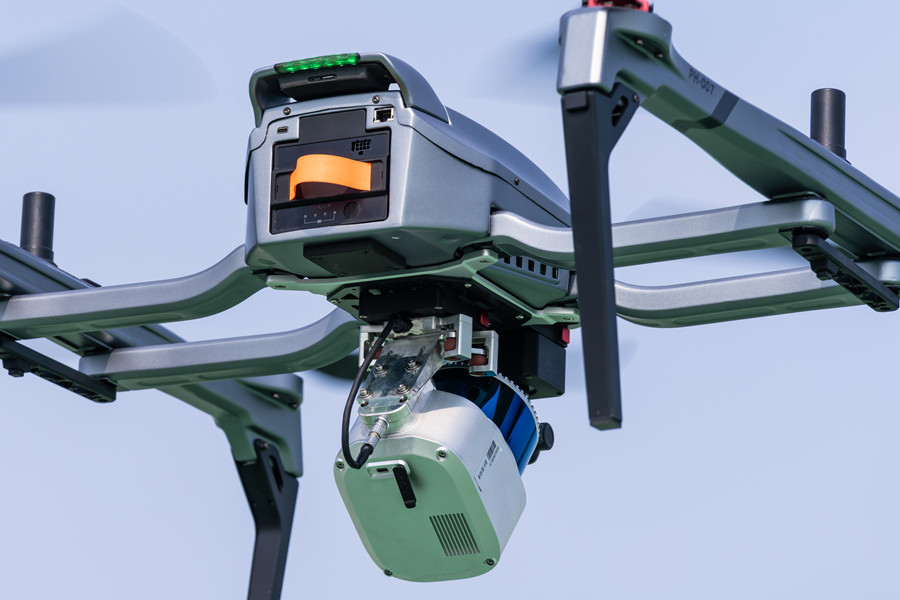
How Wind Really Affects Drone Flights?
Wind isn’t just a minor annoyance for drones — it’s a major game-changer that can mess with everything from safety to the quality of the data you’re trying to collect. Its impact goes way beyond just keeping the drone steady in the air.
Stability and Control
When the wind picks up, drones start to feel like they’re battling an invisible opponent. Suddenly, holding a steady altitude or a consistent speed feels like an uphill climb. You’ll see the drone wobbling or drifting unpredictably — it’s not just annoying, it’s a real challenge to keep precise control.
And here’s the kicker: to fight these gusts, the drone has to work overtime. It uses more energy, takes more aggressive moves, and risks throwing itself off balance. This constant tussle stresses out the motors and control systems, which isn’t great for the drone’s longevity.
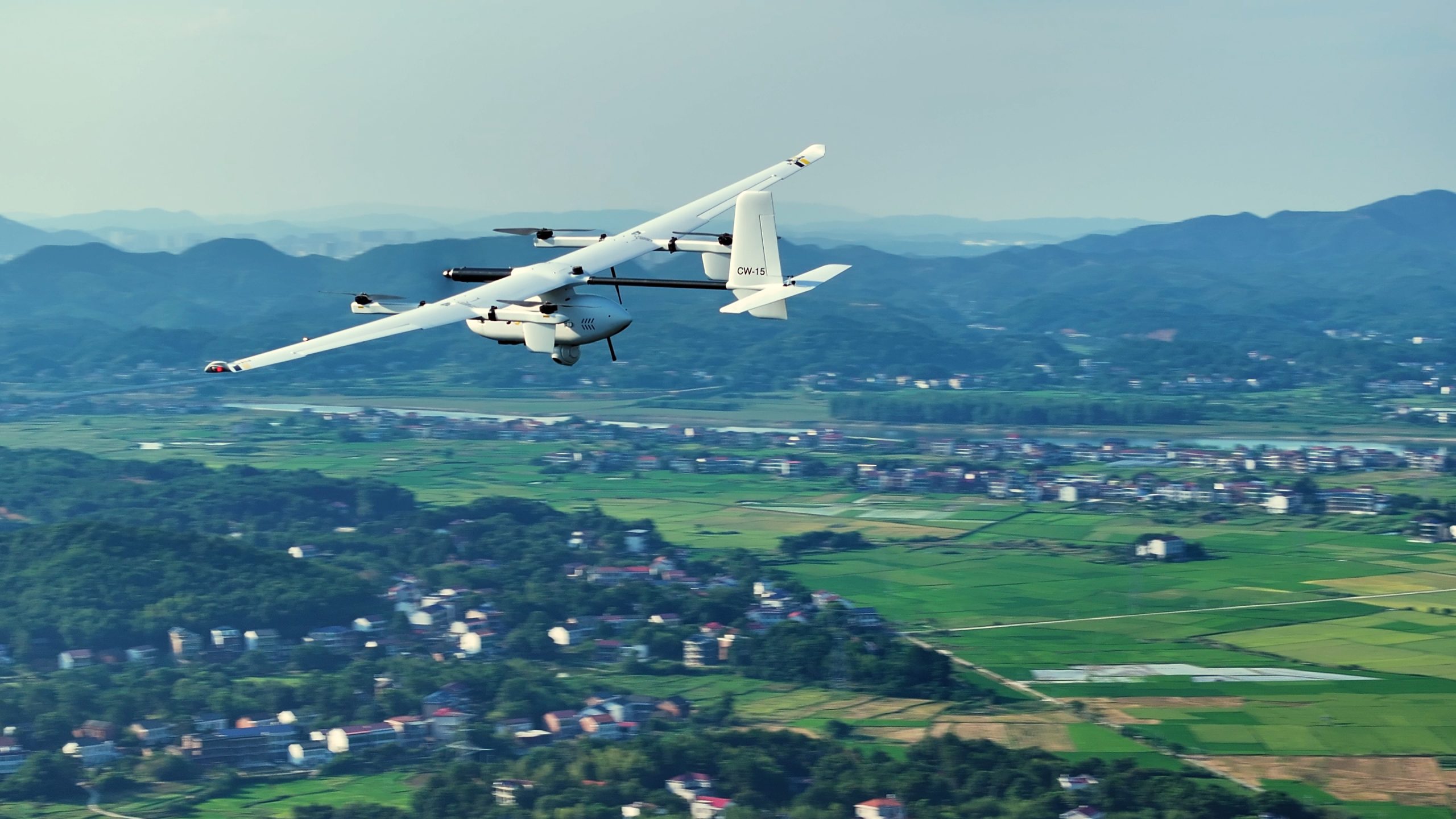
Battery Life
Because the drone’s motors are pushing harder to stay stable, the battery takes a bigger hit. Imagine trying to walk against a strong wind — you get tired faster, right? Same deal here.
This means your flight time can shrink noticeably on windy days. So, if you’re planning a mission, you’ll want to keep a close eye on battery levels and maybe schedule shorter flights to be safe.
Image and Video Quality
Even the best drones with fancy stabilization can’t always beat the wind’s jittery effects. Vibrations and shakes creep in, and suddenly your footage goes from crisp and clear to a blurry or shaky mess.
This is especially frustrating if you’re doing things like surveying or inspecting infrastructure, where every detail counts. Bad images can throw off your entire analysis.
Sensor Interference
Strong winds don’t just push drones around — they can mess with their “sense of direction,” too. GPS signals and vision sensors sometimes get scrambled or confused when things get gusty.
This makes it tougher for the drone to know exactly where it is, raising the chance of crashes or navigation errors. Autonomous drones, which rely heavily on these sensors, are particularly vulnerable here.
Payload and Lifting Capacity
Adding wind to the mix is like suddenly carrying a heavier backpack uphill. Drones carrying extra weight have a harder time staying steady because some of their lifting power has to fight the wind instead of just holding the load.
That means your drone’s effective payload capacity might drop on windy days — something to keep in mind if you’re hauling equipment or supplies.
Flight Path Accuracy
Lastly, crosswinds and sudden gusts love to push drones off course. What was supposed to be a smooth, precise path turns into a struggle to stay on track.
This loss of accuracy can be a dealbreaker for projects that need pinpoint precision, like drone light shows or detailed mapping work.
Types of Wind that Love to Mess with Drones
Wind isn’t just “wind.” It comes in different moods — some steady, some sneaky — and each one gives your drone a different kind of headache. Here’s a more human, straight-to-the-point take on the main types you’ll run into.
Constant Wind
Think of this as a long, steady push — the kind you can predict but still have to fight. The drone has to crank up the throttle and keep fighting the breeze the whole time, which means more power, faster battery drain, and a little less margin for long missions. Annoying, yes — but manageable if you plan for it.
Wind Gusts
Short, sharp, and often surprising. A gust can shove a drone off its line in an instant. Because gusts come and go quickly, the control system has to react almost immediately; otherwise you’ll see sudden jerks, drift, or shaky footage. Gusts are the “yank-the-steering-wheel” of the sky.
Wind Shear
This one’s sneaky: a sudden change in wind speed or direction over a short distance. You’ll see it near buildings, cliffs, or when climbing/descending through different layers of air. One moment you’re cruising, the next the drone lurches — precise maneuvers and automated flight paths are where shear can cause real trouble.
Microbursts
Short but brutal downward blasts — tiny, intense downdrafts that can drop a drone fast. They’re especially dangerous during takeoff and landing, when you’re close to the ground and flying slower. If you hit a microburst, recovery can be extremely difficult.
Turbulence (Turbulent Flow)
Chaotic, irregular air caused by obstacles, heating, or sudden changes in flow. Turbulence isn’t one big shove so much as a series of tiny, unpredictable forces that force the flight controller to constantly correct. The result: jittery flight and extra workload for the motors.
Key Factors Influencing Drone Wind Resistance Level
Wind resistance isn’t about a single number in the specs sheet. It’s a mix of aerodynamics, materials, propulsion, and how smart the flight control system is. Think of it as a team effort — every part of the drone plays a role when the wind picks up.
Aerodynamic Design
The shape of a drone is its first line of defense against wind. A sleek, streamlined body slices through the air, letting it flow smoothly around the frame and keeping the drone steady in gusts. Many industrial models have contoured fuselages and carefully tuned airfoil profiles so they can push through the wind without wasting battery or losing control.
Size and Weight
When it comes to wind, bigger and heavier can actually be better. Extra mass gives a drone more inertia, so sudden gusts don’t shove it around as much. The downside? More weight demands more power, which can cut into flight time. Striking the right balance between heft and battery life is key if you want both endurance and stability.
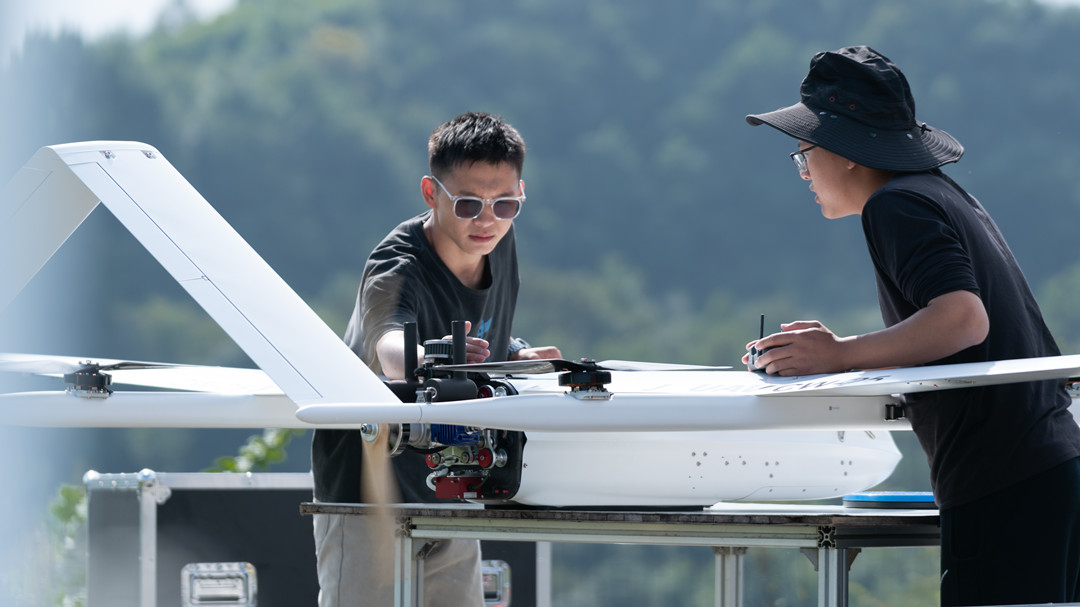
Material Strength
A strong frame isn’t just about durability — it’s about holding everything in place when conditions get rough. High-grade carbon fiber and aerospace aluminum keep the structure rigid, so the motors, sensors, and propellers stay perfectly aligned. That stiffness helps prevent vibrations and keeps performance consistent, even in strong crosswinds.
Motor Power
Motors are your muscle against the wind. High-torque, brushless motors can keep propeller speed steady even when the load increases. The thrust-to-weight ratio (TWR) is what tells you how much reserve power you’ve got to push back against gusts — the higher the ratio, the more authority you have in challenging weather.
Propeller Design
Propellers aren’t just spinning blades — their size, shape, and pitch all matter. Bigger diameters create more lift, steeper pitches boost speed potential, and extra blades can improve stability (though they may trade off some efficiency). New designs like variable-pitch or toroidal props are starting to give pilots better thrust control and steadier handling in unpredictable winds.
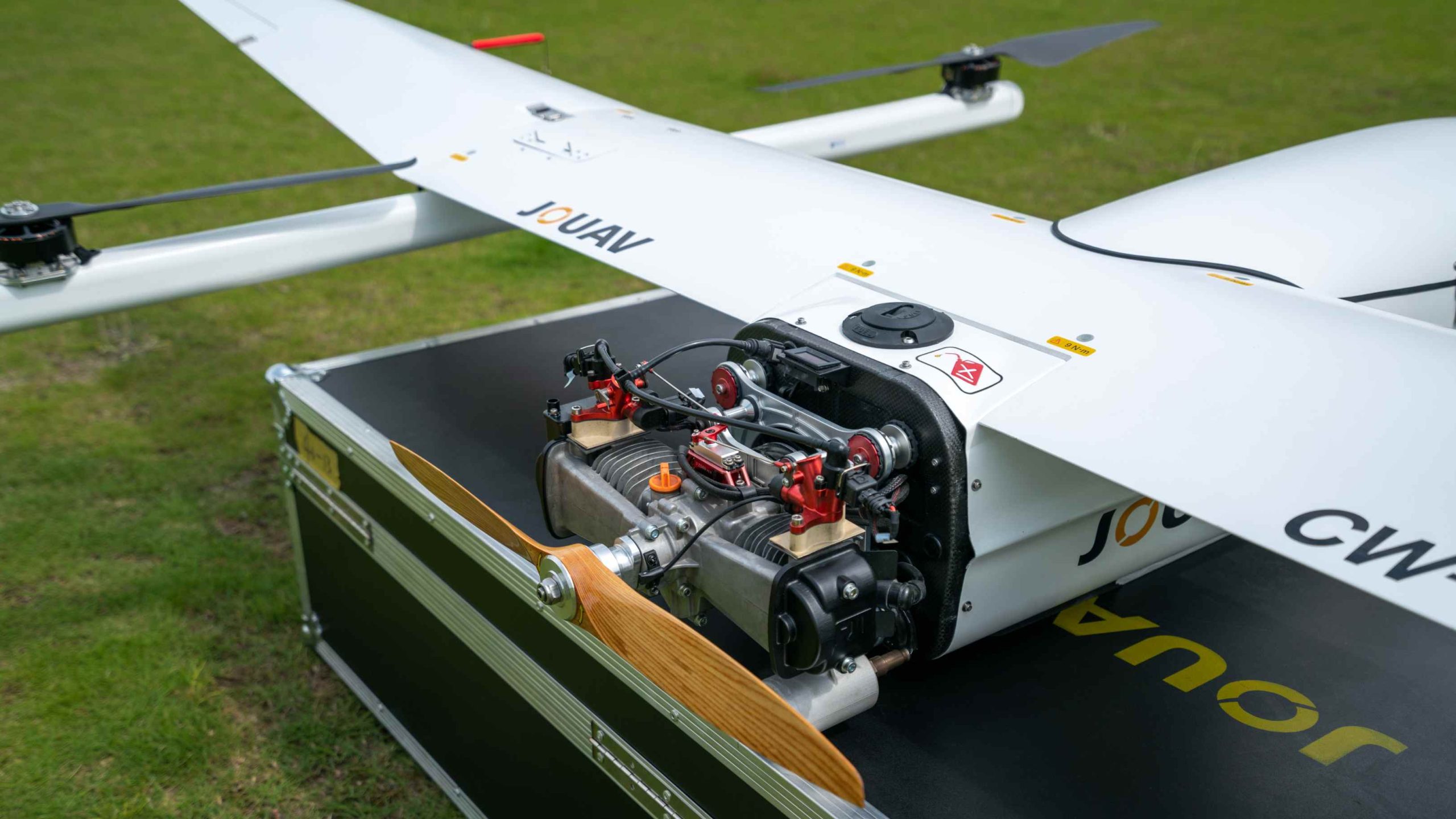
Flight Control Systems
Keeping a drone stable in wind is as much about brains as it is about brawn. GPS, vision sensors, and IMUs work together to detect drift and make micro-adjustments in real time. The system constantly tweaks motor speeds and, in some cases, propeller pitch to keep you on course.
Wind Compensation Technology
The most advanced drones don’t just react to the wind — they anticipate it. Algorithms like Model Predictive Control (MPC) and AI-assisted flight software can predict wind shifts and adjust before you even notice them. Some industrial models even carry tiny ultrasonic anemometers to measure wind speed directly, allowing near-instant corrections.
FAQ
Can I Fly at Wind Speed Above the Level Rating? What Happens?
You might get the drone up in the air when winds are stronger than what the manufacturer lists… but it’s basically rolling the dice. That “wind resistance” number in the specs isn’t a dare — it’s the point where the drone can still stay stable in a controlled, ideal scenario. Out in the real world, going beyond it means you’re flying on luck.
- Loss of stability – The motors can start losing the fight, especially when a gust hits.
- GPS drift – Your position hold gets sloppy, which is how you end up creeping toward trees, poles, or even no-fly zones.
- Battery burn-through – Fighting wind is like riding a bike uphill the whole way; your battery drains faster, and you might not make it back.
- Higher crash risk – One rogue gust that’s stronger than your motors can handle, and it’s game over.
Does Altitude Change Wind Tolerance?
Absolutely — and often by a lot. The higher you climb, the less the wind has to deal with buildings, trees, and terrain slowing it down.
- Close to the ground – Obstacles create turbulence, but they also cut down the overall wind speed.
- Mid to high altitude – Winds are usually stronger and steadier. That nice breeze at ground level can turn into a relentless push at 100–150 m (328–492 ft).
- Pro tip – Don’t be fooled by calm ground conditions. Factor in that extra wind above and keep a bigger battery reserve for the climb back.
How Does Wind Gust Frequency vs. Average Speed Matter?
Average wind speed is just the headline number. Gusts are where trouble sneaks in.
- Frequent gusts – Every sudden burst forces the drone to overcorrect, chewing through battery life and stability.
- Infrequent gusts – More manageable if your drone can catch its breath between them.
- Why it matters – A steady 18 mph breeze is often easier to handle than a “gentle” 12 mph wind that suddenly slaps you with 25 mph gusts.
Does Adding a Payload Degrade Resistance?
Yes — every extra gram changes how the drone behaves in the wind.
- More drag – A bigger surface area for the wind to shove around.
- Lower power margin – Motors spend more effort on lifting, leaving less to fight gusts.
- Sluggish control – Heavier drones take longer to stop or turn when a gust hits.
If you’ve got to fly with a payload, don’t even get close to the listed max wind speed.
How to Interpret Wind Rating in Manufacturer Specs vs. Field Tests?
Those numbers in the manufacturer’s brochure? They’re taken in perfect conditions — steady wind, fresh battery, no payload, and a pro at the controls.
- Specs – Show the extreme limit before stability starts to break down in a lab setting.
- Field reality – Lower limits because real wind brings turbulence, gusts, and surprises.
- The safe rule – Treat the spec as the “do not cross” line. In the field, your true safe limit is usually 20–30% lower.



